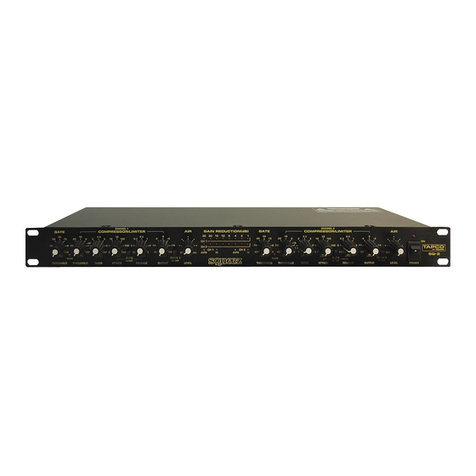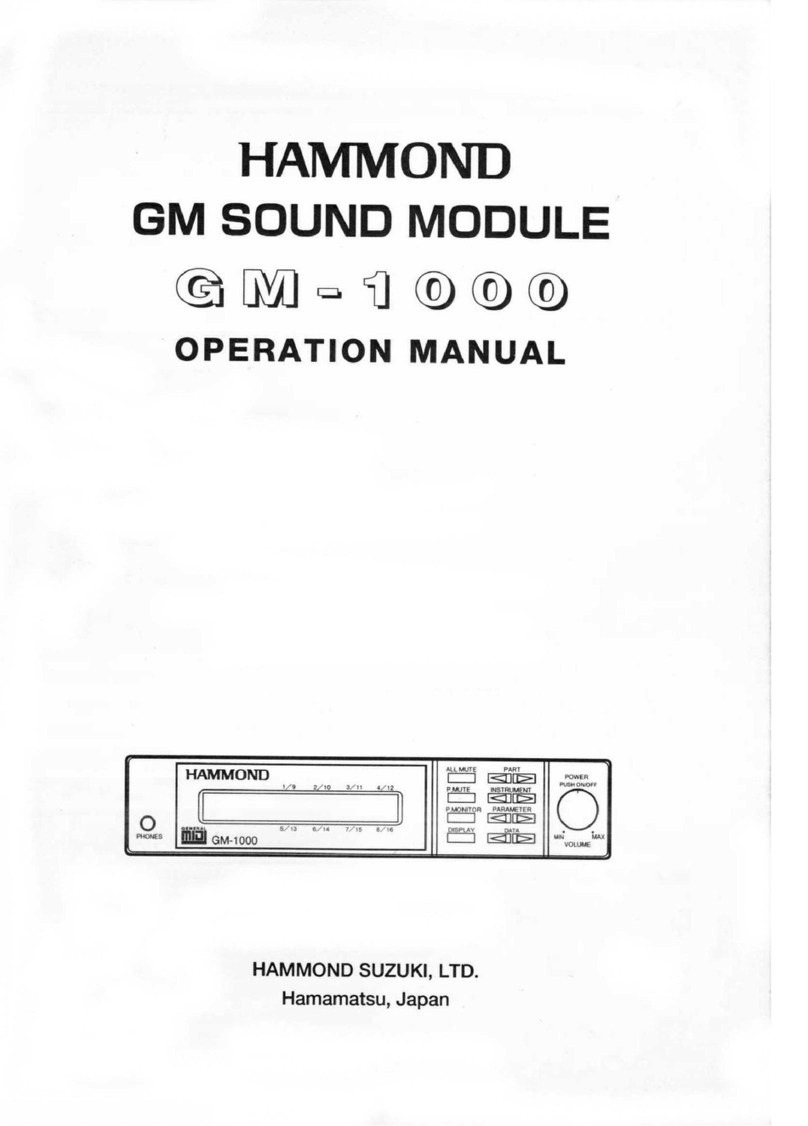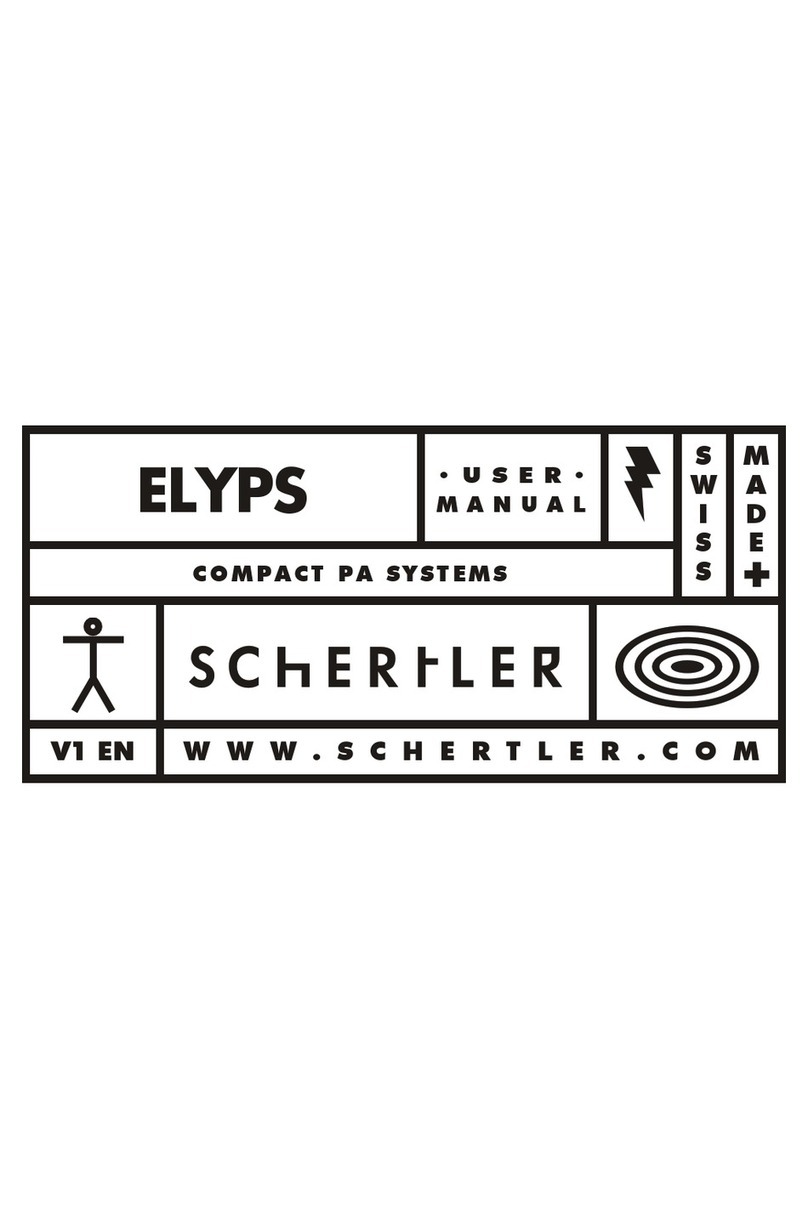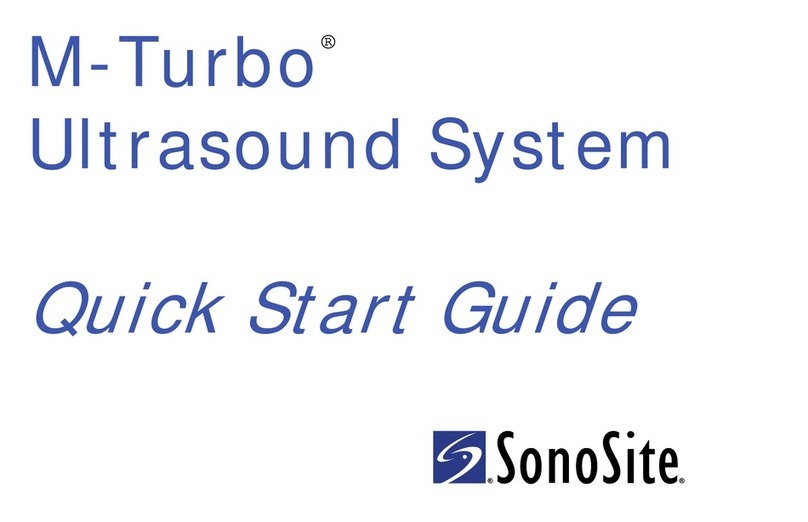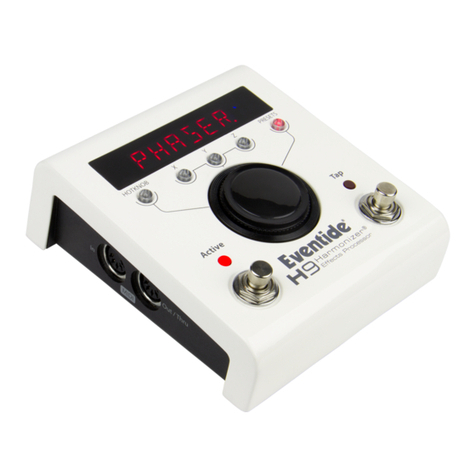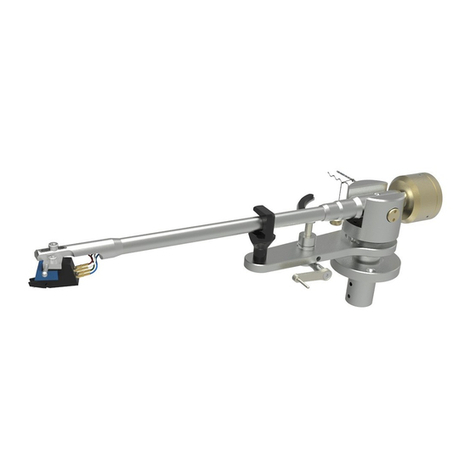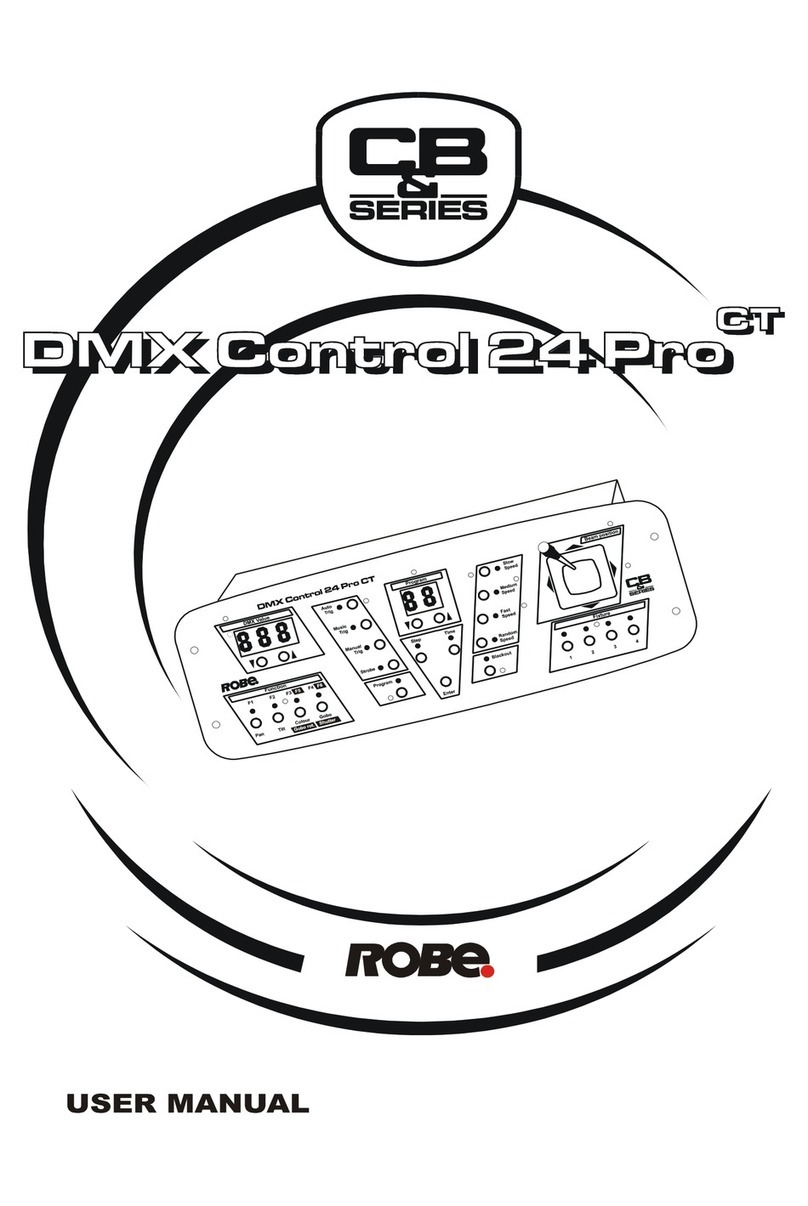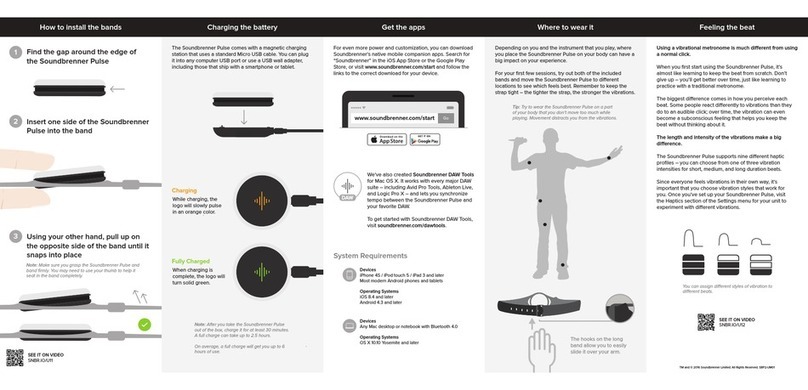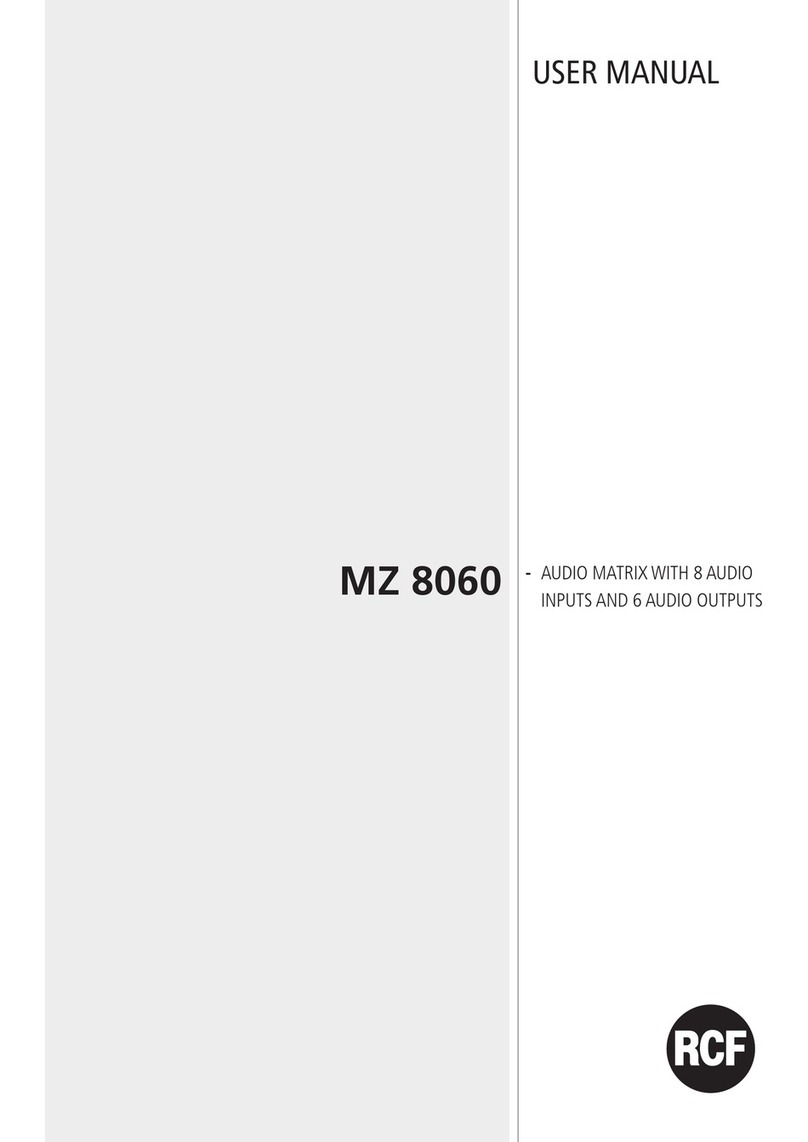Lexicon CORE2 User manual

Core2
U s e r G u i d e

Unpacking and Inspection
Afterunpackingthesystem modules,saveallpackingmaterialsincaseyoueverneedtoshiptheunits.Thoroughlyinspectthemodulesandpacking
materials for signs of damage. Report any damage to the carrier at once; report equipment malfunction to your dealer.
Lexicon Part #
070-13748
Copyright 1999, Lexicon Inc.
All Rights Reserved.
Lexicon Inc.
3 Oak Park
Bedford MA 01730-1441
Telephone 781-280-0300
Fax 781-280-0490
www.lexicon.com
Outdoor Antenna Grounding
Ifan outsideantenna isconnected tothe receiver,be surethe antennasystem isgrounded soas toprovide
some protection against voltage surges and built-up static charges. Section 810 of the National Electrical
Code, ANSI/NFPA No. 70-1984, provides information with respect to proper grounding of the mast and
supporting structure, grounding of the lead-in wire to an antenna-discharge unit, size of grounding
conductors, location of antenna-discharge unit, connection to grounding electrodes, and requirements for
the grounding electrode. See figure below.
Power Lines An outside antenna should be located away from power lines.
Power Service Grounding
Electrode System
(NEC Art 250, Part H)
Antenna Lead-in
Wire
Antenna Discharge
Unit (NEC Section
810-20)
Grounding Conductors
(NEC Section 810-21)
Ground Clamps
NEC — National Electrical Code
Electric
Service
Equipment
Ground
Clamp
Le présent appareil numérique n'émet pas de bruits radioélectriques dépassant les limites applicables aux appareils numériques de la class B prescrites dans le
Règlement sur le brouillage radioélectrique édicté par le ministère des Communications du Canada.
Thisequipment generatesanduses radiofrequency energyand ifnot installedand usedproperly, thatis, instrictaccordance withthe manufacturer'sinstructions, may
cause interference to radio and television reception. It has been type tested and found to comply with the limits for a Class B computing device in accordance with the
specificationsinSubpartBofPart15ofFCCRules,whicharedesignatedtoprovidereasonableprotectionagainstsuchinterferenceinaresidentialinstallation.However,
there is no guarantee that interference will not occur in a particular installation. If this equipment does cause interference to radio or television reception, which can be
determined by turning the equipment OFF and ON, the user is encouraged to try to correct the interference by one or more of the following measures:
Reorient the receiving antenna
Relocate the computer with respect to the receiver
Move the computer away from the receiver
Plug the computer into a different outlet so that the computer and receiver are on different branch circuits.
Ifnecessary,theusershouldconsultthedealeroranexperiencedradio/televisiontechnicianforadditionalsuggestions.Theusermayfindthefollowingbookletprepared
bytheFederalCommunicationsCommissionhelpful:"HowtoidentifyandResolveRadio/TVInterferenceProblems."ThisbookletisavailablefromtheU.S.Government
Printing Office, Washington, DC 20402, Stock No. 004-000-00345-4.
Communications Notice
"ADAT" is a trademark of the Alesis Corporation.
"Cool Edit Pro" is a trademark of Syntrillium.
"Type IV is a trademark of dbx Corporation.

Table of Contents
1 Getting Started
Introduction ................................................................................................ 1
System Requirements ................................................................................. 2
2 Installation
Precautions ................................................................................................ 3
Hardware Installation ................................................................................... 3
Setup • Install the Card • Cables/Connections
Software Installation .................................................................................... 6
Install Supported Third Party Software • Install the Lexicon
Studio Driver for Windows • Running the Setup.exe Program
Updating Drivers .......................................................................................... 7
Remove the Old Software • Update Studio Driver • Reinstall
Setup.exe
3 Using the LexPanel
Core2 Tab .............................................................................................. 11
Analog Input • dbx Type IV™
Punch Tab .............................................................................................. 16
Configuring the Punch Tab • The MIX Level Control • The
Monitor Buttons
Clock Source Tab ...................................................................................... 18
4 Using Cool Edit Pro
Installing Cool Edit Pro .............................................................................. 19
Assigning I/O in Cool Edit Pro ................................................................... 20
Optimizing Multitrack Performance in Cool Edit Pro................................. 21
5 Troubleshooting
Common Problems and Solutions ............................................................. 23
Optimizing Windows for Audio Applications .............................................. 26
6 Specifications

Lexicon Part #
070-13748
Lexicon Inc.
3 Oak Park
Bedford MA 01730-1441
Telephone 781-280-0300
Fax 781-280-0490
www.lexicon.com

1
1
Getting Started
Lexicon Studio Core2 User Guide 1
Getting Started
Introduction
ThankyouforyourpurchaseoftheCore2,Lexicon's24-bitmultitrackdigitalaudiorecorder,designed
to give you the highest possible performance in your computer-based hard disk recording system.
Your Core2 package includes:
• a Core2 PCI card in an anti-static pouch
• a disposable anti-static wrist strap
• a breakout connector box
• a Core2 audio connector cable
NOTE:TheCore2cableisashieldedaudiocablethathasbeenmanufacturedspecificallyforuse
withthe Core2.Use of any other cablewill substanitiallyreduce audio qualityand mayotherwise
adversely affect performance.
• a CD containing the Core2 drivers, Syntrillium Software's Cool Edit Pro™ and a Read Me
document with any late-breaking information.
• the Core2 User Guide (this document)
The latest updates in both software and documentation are available on our website at
www.lexicon.com.

Getting Started
2
2
Lexicon
System Requirements
The following systems are the minimum required for working with the Core2:
• an IBM-PC or compatible computer with PCI architecture expansion slots, a Pentium micropro-
cessor (200MHz or faster), and minimum 64MB of RAM running Windows 95 or later
• a fast, high capacity IDE or SCSI hard disk drive
• peripheral audio equipment such as a mixer, power amplifier, DAT recorder, etc.

3
3
InstallationLexicon Studio Core2 User Guide 2
Installation
Precautions
• Turn off and unplug your computer.
• Use the anti-static wrist strap provided with your system and make sure that you are grounded
during the entire installation process to prevent static charges that can damage components.
• Put the anti-static bags containing your cards near your computer to avoid walking around with
a card and generating static electricity after it is removed from its bag.
• Before handling any Lexicon Studio cards, discharge any personal static electricity that may be
on your clothes or body by touching a grounded metal surface, such as the power supply case
inside your computer.
• Handlethe cards only by theiredges, as youwould aCD. Avoid touchingthe pinson the bottom
edge of the cards.
• Savethe anti-staticbag containingyour Lexiconaudio card.This prevents static electricity from
damaging sensitive electronic components on the card.
Hardware Installation
As some Lexicon Studio software is installed into directories of your audio control software, you
should install and verify that your audio software launches properly before installing Lexicon Studio
(eventhoughitwillnotbeaudio-capableuntilinstallationoftheLexiconStudiosystem).Pleaserefer
to your audio software manual for details on installation, and then proceed with Lexicon Studio
hardware and software installation.

Installation
4
4
Lexicon
TheCore2 cardmust beinstalled ina PCIslot whichis abus masterslot totake advantageof itsbus
master capabilities. Refer to your computer owner’s manual to determine which slots are available
as bus masters. (On some older motherboards, the PCI slot next to the ISA bus connector [the PCI/
ISA/ shared slot] is not a PCI bus master slot).
Setup
1. Put on the anti-static wrist strap.
2. PlacethefoamfromyourLexiconStudiopackageontopofaworksurfacenexttoyourcomputer.
3. Make sure that your computer is properly shut down and unplugged.
4. Remove the computer top cover and PCI slot cover(s) for the slots you’ve chosen for the Core2
card.Ifyoudonotknowhowtoopenyourcomputer,consultthemanufacturer’sowner’smanual.
5. Touch the computer power supply case to discharge any personal static electricity.
6. Removethe Core2 fromitsanti-static bag, holdingthecard only byits edges. Becarefulto avoid
touching the pins on the bottom edge of the card.
Install the Card
1. Align the Core2 card over the slot you’ve chosen and insert it.
2. Place one hand along the top edge of the card and push down firmly until the card is fully seated
in the slot. Do not use excessive force.
3. Oncethecardisfullyseated,attachthebrackettothecomputerchassiswiththescrewsprovided
withyour computer. Ifthecomputer is atoweror mini-towerdesign,check to seethatboards are
not bending under their own weight and shorting against each other.
4. Replace the cover on the computer. Do not operate the system without the cover.

5
5
InstallationLexicon Studio Core2 User Guide
Cables/Connections
1. Use only the proprietary Lexicon cable (provided) to connect the Core2 card to the Lexicon
Core2 connector box.
2. With the computer powered down, attach the cable between the connector on the back of the
Core2 card and the Computer port on the connector box.
3. Connect your external audio devices to the connector box, or to the optical connectors on the
Core2 card itself.
Theconnectorboxhousesfourunbalanced1/4"analoginputsandeightunbalanced1/4"analog
outputs, as well as a coaxial S/PDIF input and output. The coaxial input can also be used as a
Word Clock input. (See Chapter 3.)
The back plate of the Core2 card carries the optical connectors. These can be configured (via
the Control Panel) to accept either ADAT™ or S/PDIF formats.
The Core2 can run in a variety of modes which affect the number and type of available I/O. These
operating modes are described in detail in Chapter 3: Core2 Basics.
Connecting the Core2 Card to the connector box.
INPUTS
13
24
13
24
OUTPUTS S/PDIF IN
OUT
(WORD CLOCK)
57
68

Installation
6
6
Lexicon
Software Installation
Install Supported Third Party Audio Software
The Core2 requires compatible front-end software (such as Syntrillium Software's Cool Edit Pro) to
operate. Please refer to your particular software installation guide for assistance. As Lexicon Studio
installs software within directories of your front-end software, you should install your audio software
first and verify that it launches properly before installing Lexicon Studio (even though it will not be
audio-capable until installation of the Lexicon Studio system).
IfyouareinstallingalaterversionofLexiconStudiosoftwareoveryourcurrentStudiosoftware,please
skip to the next section entitled
Updating Drivers.
Install the Lexicon Studio Driver for Windows
1. With your Lexicon Studio hardware and third party audio software installed, power up your
computer. Once your computer is fully booted, Windows will identify your Core2 as a new PCI
multimedia device. In the event of booting problems, refer to the troubleshooting section of this
user guide.
2. TheWindowsUpdateDeviceDriverWizardwillappear.Insertthe
“LexiconStudio:Core2:Drivers
&Documentation”
CD-ROM
,andclicktheNext > button,allowingWindowstoperformasearch
for the Lexicon Studio driver.
3. WindowswillfindthedriverinformationfortheLexicon StudioSound SystemontheCD-ROM.
Ifitdoesnot,youmayneedtoBrowsetoit.Ifyouencounterproblemslocatingthefirstfile,check
to make sure the path is correct, then click OK. Click the Finish button.
4. When the drivers are loaded, you will be prompted to restart your computer. You should choose
not to restart at this time and proceed with these instructions. Windows will prompt you twice to
restart. Select No at both prompts.

7
7
InstallationLexicon Studio Core2 User Guide
Running the Setup.exe Program
1. Insert the
“Lexicon Studio Core2: Drivers & Documentation”
CD-ROM if you haven’t already.
2. Open the contents of the CD-ROM and double-click on Setup.exe to launch the Installer.
3. Click Next > at the Installer welcome screen.
4. At the summary screen, select the desired software and click Next > to choose it.
5. Click Next > to begin the installation.
6. Click Finish to complete the installation.
7. Cold boot your computer (even if you’ve already restarted after installing the Core2 Drivers).
To remove or update this software, remove the install by using the Add/Remove Programs control
panel,highlighting file, and selecting Remove.ThiscontrolpanelislocatedatStart/Settings/Control
Panel/Add/Remove Programs.
Updating Drivers
Ifyou are installinga newerversion of LexiconStudio softwareover your currentsoftware, follow the
steps outlined below.
Remove the Old Software
AsLexiconStudiosoftwareisregisteredthroughtheWindowsAdd/RemoveProgramscontrolpanel,
itmust be completelyremoved toinstall a newerversion. Youshould never have2 different versions
of the software installed simultaneously.
1. Go to Start/Settings/Control Panel /Add/Remove Programs.
2. Scroll down to Lexicon Core2.
3. Click the Add/Remove button.
4. Click the Yes button when asked “Are you sure you want to completely remove Lexicon Core2
and all of its components?”.

Installation
8
8
Lexicon
5. Click OK to close the control panel
.
Update Studio Driver
IfyouhaveaCD-ROMorhavedownloadedLexiconStudiodriverswithahigherrevisionnumberthan
thosecurrentlyinstalledinyoursystem,youshouldchoosetoupdateyourdriver.Todoso,followthe
directions below.
1. Go to Start / Settings / Control Panel / System.
2. Click on the Device Manager tab..
3. Open the directory for Sound, Video and Game Controllers.
4. Highlight Lexicon IDS Sound System by clicking on it.
5. Click the Properties button.
6. Select the Driver tab within the Properties page.
7. Click the Update Driver... button.

9
9
InstallationLexicon Studio Core2 User Guide
8. Windows will ask if you want to search for the driver. Select Yes (Recommended).
9. Windows will search the drive from which a driver was last loaded. If you installed drivers from
floppydisk,itwillcheckonlythefloppydrive.Ifyouhaveloadedtheupdateddriversfromdifferent
media, you will need to click the Other Locations... button and Browse to the CD-ROM for the
newdriver.Ifyouencounterproblemslocatingthefirstfile,checktomakesurethepathiscorrect,
then click OK.
10. Click the Finish button.
11. Windows will prompt you to restart. Select No when prompted and continue with these
instructions.
Reinstall Setup.exe
1. Insert the
“Lexicon Studio Core2: Drivers & Documentation”
CD-ROM if you haven’t already.
2. Open the contents of the CD-ROM and double-click on Setup.exe to launch the Installer.
3. Click Next > at the Installer welcome screen.
4. At the summary screen, select the desired software and click Next > to choose it.
5. Click Next > to begin the installation.
6. Click Finish to complete the installation.
7. Cold boot your computer (even if you’ve already restarted after installing the Core2 Drivers).

Installation
10
10
Lexicon

11
11
Using the LexPanelLexicon Studio Core2 User Guide
Using the LexPanel
AllCore2I/OcontrolsareaccessedviatheCore2ControlPanel.TheControlPanelcanbeaccessed
bydoubleclickingontheLexiconStudioiconintheTaskbarorfromwithinanASIOapplication(such
asCubaseVST).TheControl Panel allows youto selectthenumberandtypeofactive channels, the
current clock source and sample rate mode, as well as punch routing.
The method of selecting tabs for different pages will be familiar to users of Windows and other
Microsoftproducts. The selectionsare Core2, Punch,andClock Source.Notethat theClockSource
tab will not be present when using an ASIO application.
Core2 Tab
ThistabletsyoudeterminewhichCore2I/Ostreamsareactive.Anactivestreambecomesavailable
as a clock source, as a source/destination for Punch, and for use in the audio application.
3

Using the LexPanel
12
12
Lexicon
Each I/O button on the Routing tab will turn on
all
of the corresponding inputs or outputs. Selections
whichare precluded bycurrent selections appearin gray. Acheck boxlabeledOptical appears next
totheS/PDIFbuttons.Whenthisboxischecked, the optical connectors on theCore2 card willbe set
to the S/PDIF format — and the ADAT buttons will be unavailable for selection (gray).
Below is a table of possible configurations:
Option Coax Coax
Number Analog In Analog Out S/PDIF In S/PDIF Out Optical In Optical Out
1 X X - - ADAT ADAT
2XXXX --
3 X X - - S/PDIF S/PDIF
4 X X - X ADAT -
5 X X X - - ADAT
Press Apply or OK to save routing changes.
If you are using the Wave drivers, and make any changes to the Routing Tab in the Lexicon control
panel, you
must
restart Windows in order to have these changes take effect.
If the ASIO drivers are being used, it is not necessary to restart Windows. Simply quit then re-launch
theaudioapplicationtohavetheroutingchangestakeeffect.InCubase,blanklabelsontheInputand
Output buses indicates that the application must be restarted. If you are using Cubase and have
launchedtheLexiconControlPanelfromtheWindowstaskbar,youmustquit Cubasebeforemaking
changes to the Routing Tab.
NOTE: At least one Input pair and one Output pair must be enabled in order to launch Cubase. If no
streamsareactive,anerrormessagewillindicate that the ASIO LexiconStudio V4.2driver could not
be loaded. If this occurs, quit Cubase, launch the LexPanel from the Windows taskbar, turn on one
or more I/O streams, then re-launch Cubase.

13
13
Using the LexPanelLexicon Studio Core2 User Guide
Analog Input Levels
The level of the Analog Inputs can be controlled by on-screen faders with the level displayed
numerically at the bottom. A level setting of 0dB sets unity gain from the analog input to the analog
output. A setting of 0dB corresponds to -10dBV, 18dB below digital full-scale.
TheLink buttonbetweenfaderpairsallowsthemtobelinkedasastereopairforconvenientidentical
gain setting. The left fader value takes precedence when Link is used to make the faders operate at
the same level.
Control click on the Link button to link the fader heads while maintaining their relative levels.
Control click on a fader head to set the fader (or linked fader pair) to 0dB.
To enter gain levels numerically, double-click on a numeric field, then enter a value.

Using the LexPanel
14
14
Lexicon
dbx Type IV
The Core2 card comes equipped with the dbx Type IV Conversion System, featuring on-board Tape
Saturation Emulation (TSE™). Type IV enhances the dynamic range of A/D converters by providing
alogarithmic“TypeIVOverRegion”thatextendstheuseabledynamicrangebeyondthelinearrange.
TSE captures the sound of an analog tape machine in the saturation region.
Type IV On Type IV Off
Type IV is turned on and off on the Core2 card via four jumpers located on the card itself. The card
isshippedwithallofthesejumpersinthe“in”position(TypeIVon).TheLED’sundertheTypeIVlogo
should be illuminated to indicate that each is active.To turn Type IV off on a channel:
1. Remove the Core2 card from the computer. Follow the precautions noted in the installation
instructions.

15
15
Using the LexPanelLexicon Studio Core2 User Guide
2. Move the desired jumper to the “out” position. (The jumper nearest the edge of the card is for
Analog Input 1.)
3. Replace the Core2 card in the computer, reboot, and launch the Lexicon Control Panel. The
corresponding LED under the Type IV logo should be off (indicating that Type IV is inactive on
this channel).
Punch Tab
This page lets you select input Sources for Punch or overdub recording and output monitor
Destinations for the sources selected for Punch or overdub recording. The Punch feature lets you
performoverduborpunchrecordingbydirectlyconnectingtoaLexiconStudiointerface—noexternal
mixer is required.
All computer operating systems have a delay when applications use host processing. The delay will
vary depending on the buffer size of the audio hardware. This means that, when playing along with
previouslyrecordedtracks,thetrackyouareplayingwillsounddelayedwhileyouareperforming.This
delay can be overcome by using an external mixer, or by using the Punch feature.

Using the LexPanel
16
16
Lexicon
The punch feature mixes the input signals directly with the outputs selected for your monitor system
(speakers or headphones) to avoid the inherent processing delay from the card to the computer
application and back.
Unlike monitoring through a tape deck where the input is typically monitored when the transport is in
Stop or Record and muted during Play, the input signal is monitored
all the time
.
Configuring the Punch feature
1. Select Enable Punch to turn on monitoring.
2. Select as many input sources as you like, clicking multiple selections with the shift or Ctrl key.
Note that only those I/O selections which are currently enabled in the Routing tab will appear as
Source and Destination selections.
3. Select the outputs you are using for monitoring. (Often the analog left and right outputs will be
connected to an amp and speakers — digital connection to a mixer is, of course, also possible.)
A mono mix of the selected inputs will be sent to the outputs.
4. If you are using Cubase, select Global Disable from the System Setup dialog to turn off the
monitoring through the application so that a delay is not heard from the input signal.
The MIX Level Control
MixLevel allowsyoutoadjustthevolumeoftheselectedPunchsourcesthataremixedwiththeVST
output assigned to the same outputs (usually “Master”).
NOTE: If multiple sources are being summed, the Mix Level may need to be lowered to avoid
distortion. In such cases, try an initial setting of 40.
Other manuals for CORE2
2
Table of contents
Other Lexicon Music Equipment manuals
Popular Music Equipment manuals by other brands
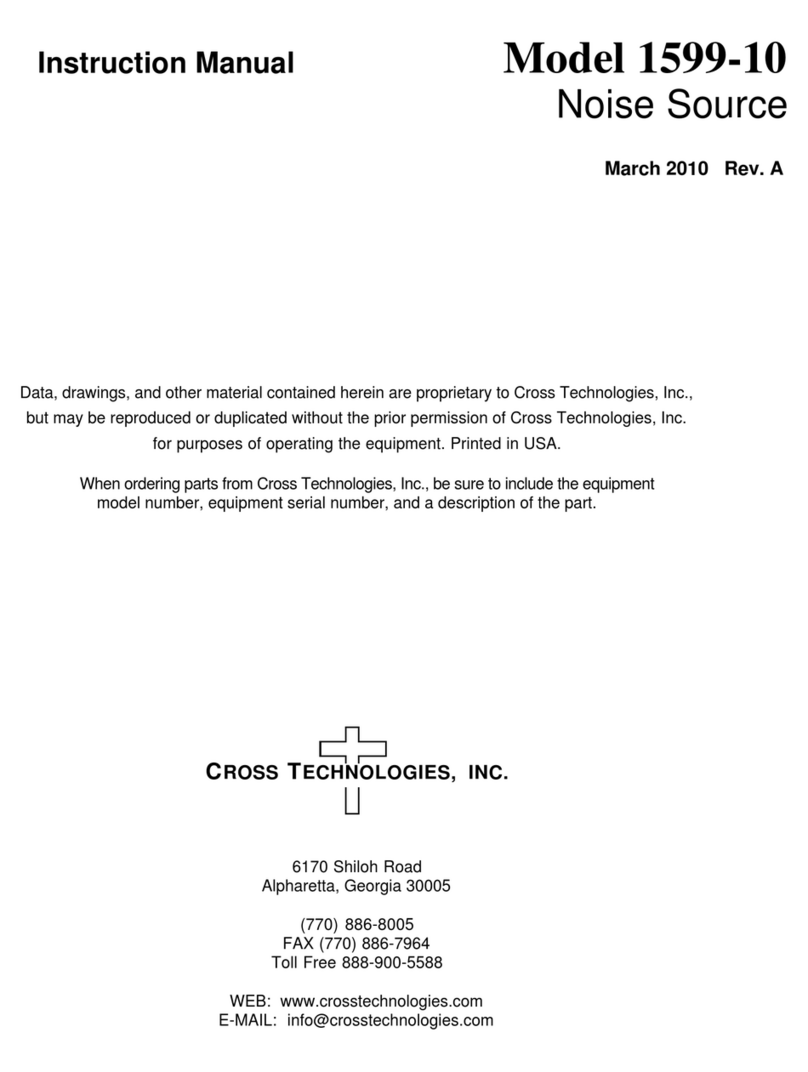
Cross Technologies
Cross Technologies 1599-10 instruction manual

Roland
Roland AC-90 Acoustic Chorus user manual

Dangerous Music
Dangerous Music Additional Switching System user guide

Vintage Revolution
Vintage Revolution PedalPro owner's manual
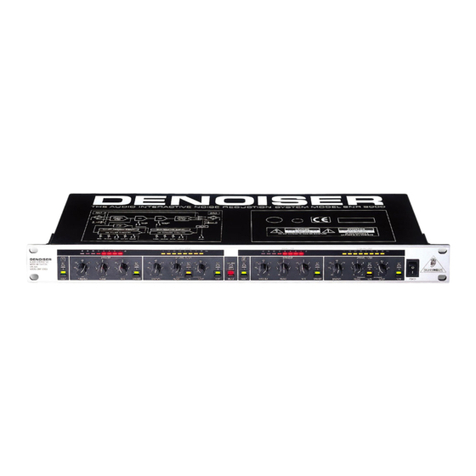
Behringer
Behringer Denoiser SNR2000 user manual

MADRIX
MADRIX PLEXUS user manual
